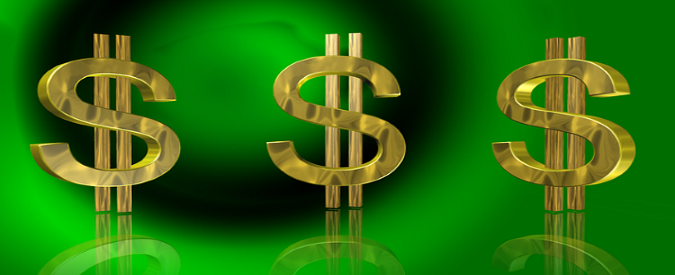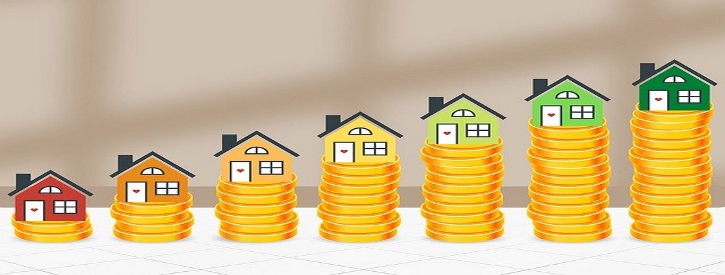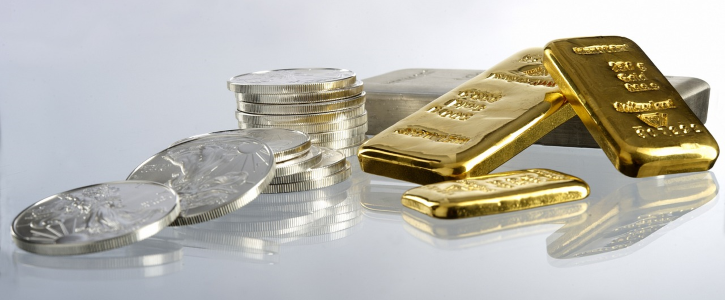 I had realized a few days ago that I am approaching the ninth month since I moved and started living on my own for the first time. It has been quite an experience. On the financial side of things, it has been quite enlightening to manage my own finances and keeping such in-depth track of my dividend income. One financial aspect that I never really had before was this high a savings rate. I am happy to say I have managed to achieve a 50% savings rate for most of those nine months while the remainder have been perilously close. How was I able to do this? By living a more frugal lifestyle and avoiding excess.
I had realized a few days ago that I am approaching the ninth month since I moved and started living on my own for the first time. It has been quite an experience. On the financial side of things, it has been quite enlightening to manage my own finances and keeping such in-depth track of my dividend income. One financial aspect that I never really had before was this high a savings rate. I am happy to say I have managed to achieve a 50% savings rate for most of those nine months while the remainder have been perilously close. How was I able to do this? By living a more frugal lifestyle and avoiding excess.
One of the keys to a higher savings rate is both living within and below your means. This was the first time I got to put that financial lifestyle into complete practice. Avoiding excess of what I need from the smallest to the largest has allowed me to live off a single paycheck per month while saving my other paycheck (I get paid twice per month). One amusing thing about this is that I certainly could live a more lavish lifestyle, but I choose not to. Living a more frugal lifestyle has been a huge boost to my savings and can be a huge boost to your savings as well.
Living on my own the past nine months has shown me first hand that life is full of expenses. Many of those expenses are unnecessary. Often, there are costs for unneeded excess services or goods that are simply unneeded. From the smallest to the largest, these are ways I have avoided excess, cut expenses, and put frugality into practice.
The Small Things
 One that I have spoken of before is monthly cell phone expenses. I used to split the cellphone bill with my brother, but it would cost me $65 per month ($780 per year). That was lower then what the average American spends yearly, but I wanted to go lower and cut off the excess. I switched providers and cut the plan down to 1GB for $30 per month. That is all I needed. It is very rare that I ever go above the 1GB limit. The salesperson tried to talk me into paying more for more GB, but I knew such excess was unneeded. I could have bought more, but I chose not to.
One that I have spoken of before is monthly cell phone expenses. I used to split the cellphone bill with my brother, but it would cost me $65 per month ($780 per year). That was lower then what the average American spends yearly, but I wanted to go lower and cut off the excess. I switched providers and cut the plan down to 1GB for $30 per month. That is all I needed. It is very rare that I ever go above the 1GB limit. The salesperson tried to talk me into paying more for more GB, but I knew such excess was unneeded. I could have bought more, but I chose not to.
What about cable? Some people can’t live without it. Personally, I can live just fine without it. Do I really want to spend over $100 per month for over 200 channels and add-ons I will probably never use? Even when I had cable in my life I rarely watched beyond my usual 7 channels on any given week. Why do I need over 200? I could certainly afford the best Cable package with hundreds of channels and other great add-ons, but then that is in excess of anything I need. It is not worth the expense to me. I stick with Hulu and Netflix which is all I really need.
The Medium Things
 Then there is furniture. Some people go overboard with expensive furniture. The issue of furniture came about after I moved into my new Co-op apartment. I spend nearly 3 months without a couch searching for the right one at a good price. Funny thing, there was a Raymour and Flanigan a 15-minute walk away. But the lowest price the salesman was offering was $800 on a loveseat. I wasn’t going to pay that. Eventually, I did buy a loveseat and paid only $450 for it elsewhere. I don’t need an expensive sofa, no fancy lamps, no crystal chandeliers, no luxury brand dressers, etc. Could I buy such things? Sure, but why would I want to? I don’t need all that and I have no desire to “show off “anything. Simple and minimal is great for me and my finances.
Then there is furniture. Some people go overboard with expensive furniture. The issue of furniture came about after I moved into my new Co-op apartment. I spend nearly 3 months without a couch searching for the right one at a good price. Funny thing, there was a Raymour and Flanigan a 15-minute walk away. But the lowest price the salesman was offering was $800 on a loveseat. I wasn’t going to pay that. Eventually, I did buy a loveseat and paid only $450 for it elsewhere. I don’t need an expensive sofa, no fancy lamps, no crystal chandeliers, no luxury brand dressers, etc. Could I buy such things? Sure, but why would I want to? I don’t need all that and I have no desire to “show off “anything. Simple and minimal is great for me and my finances.
Food. We all got to eat. But food can sometimes (many times) cost a great deal depending on your preferred eating habits. If you eating habits are extravagant you can easily spend over $1000 per month on food just for yourself. I keep my food expenses low by not eating out so often as before and buying groceries on sale. I “brown bag it” every day for lunch at work. Overall, I normally spend less than $60 per week on food for the week. That equates to about $240 per month but I am usually closer to $200. If I put my all into it and go the ramen noodle route I could save even more. But I am comfortable at my normal food spending rate. Sure, I could afford to go out to eat every day (or order in), but I chose not to do so and save my money instead.
The Large Things
 Transportation. My transportation expenses are essentially zero. I walk everywhere including to work. I could take the bus or subway and be at work in 20 minutes (more or less). But why spend $6 per day traveling to and from work (in NYC they raised the fare to $3.00). That equates to $120 per month and $1440 per year. That is far less expensive than the cost of owning and operating a vehicle which stands at an average of $8,469 annually. Everyone’s situation is different, but if you could avoid the cost of a vehicle you will be able to save a nice chunk of change and increase your savings rate significantly. Otherwise, public transportation would be the next cheapest alternative.
Transportation. My transportation expenses are essentially zero. I walk everywhere including to work. I could take the bus or subway and be at work in 20 minutes (more or less). But why spend $6 per day traveling to and from work (in NYC they raised the fare to $3.00). That equates to $120 per month and $1440 per year. That is far less expensive than the cost of owning and operating a vehicle which stands at an average of $8,469 annually. Everyone’s situation is different, but if you could avoid the cost of a vehicle you will be able to save a nice chunk of change and increase your savings rate significantly. Otherwise, public transportation would be the next cheapest alternative.
Housing. This is the biggest one in terms of expenses. When I started looking for my current place I already knew what I wanted and what I did not want. I wanted a Co-op apartment, either a one bedroom or a studio and I did not want to pay more than $115,000 max in cash (that’s considered cheap here in NYC) on my purchase. Nor did I want to take out a mortgage. I did not want to spend more than $700 per month in maintenance (a Co-ops version of “rent”). My goal in buying a convenient place to live was to minimize cost and maximize savings!
This was not easy to achieve. More than half the real estate agents I spoke to would not even give me a chance (some did not even bother responding). I’m sure they would have liked someone with more expensive tastes. But I did eventually find the right place for the right price (I paid $95,000 cash for it) with a $507 monthly maintenance fee. Living in a city where very low rent for a one bedroom is considered to be $1,100-$1,400 per month, getting a co-op apartment (a studio) for $507 per month was great! By keeping monthly “rent” costs low, I have successfully maximized my savings rate.
I had other choices when shopping for a home to live in. At the time, I had over $105k in the bank and over $130k in investments. I didn’t have to spend only $95K (the lowest price range I seen). I could have bought a large one bedroom with a giant kitchen, wide living room, and huge bathroom. Heck, I could have purchased an apartment in a building with a doorman, parking garage, and a pool. I did visit apartment complexes like that with Co-ops between $150-$200K. But did I really need all that? Some of the real estate agents thought so. After all, I could afford it. But I chose to be more economical in my purchase.
I did not need giant apartment with an equally giant price tag attached to it. While a building with doorman sounds nice and classy, I did not feel it necessary. I lived the first 29 years of my life without a doorman and I was sure I could live the next 29 years without one. Nor did I need a parking garage (I have no car) or a pool (I don’t swim). All good selling points for the building but each of those had fees attached to them. Now the building I moved into has none of that. And my building is far from a slum. It is a very nice (and clean) building and I am happy I moved in the complex. Keeping housing costs low has been the largest boost to my savings.

I turned 30 years old in early July 2017. I have managed to live the first 9 months of my 30’s in frugal fashion. Saving my money and avoiding excess of what I need. Far from painful, this experience has been enjoyable. I am able to save and investment more; which means putting my money to work for me. Having a high 50% savings rate means more investments, more dividends, and increased wealth. Over the past 9 months, I have managed to cross the $250K mark in net worth and build a dividend portfolio that is set to generate over $8,500 in annual dividend income. That will eventually lead to financial independence and freedom! I will continue to build my Dividend Dynasty! So how about the rest of you? Do you have frugal habits? Got any other ways to save money?
Like this:
Like Loading...



